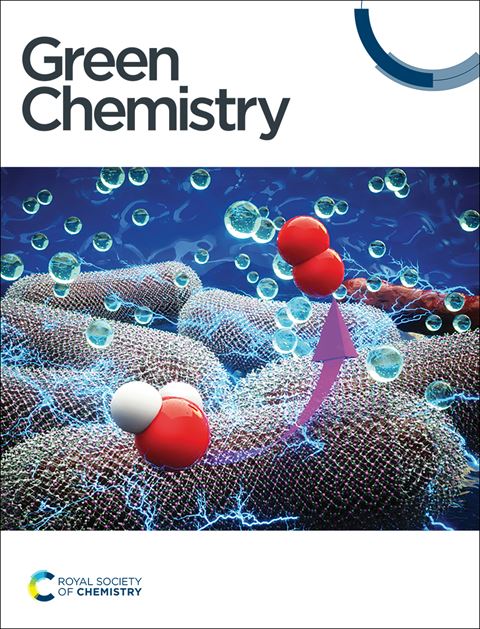Evaluating the possibilities and limitations of the pyrometallurgical recycling of waste Li-ion batteries using simulation and life cycle assessment†
IF 9.3
1区 化学
Q1 CHEMISTRY, MULTIDISCIPLINARY
引用次数: 0
Abstract
Pyrometallurgical recycling of Li-ion batteries has been deemed energy-intensive and thought to result in poor recoveries, and it is typically considered disadvantageous in environmental terms in comparison to hydrometallurgical and direct recycling in the state-of-the-art literature. The process pathways for Li-ion batteries are constantly evolving, however, and such assumptions warrant re-evaluation when new technologies emerge, such as for the recovery of lithium by volatilization. The potential benefits and limitations of pyrometallurgical Li-ion battery recycling were evaluated with process simulation and life cycle assessment with and without pre-treatment stage for dismantled end-of-life batteries to demonstrate how the current processes should be developed to reach the EU's battery regulation goals. The analysis showed that the recovery of lithium by novel volatilization method followed by leaching-carbonation is environmentally viable, and that the pyrometallurgical recycling of nickel and cobalt-bearing NMC111 and NMC811 batteries results in significant impact reductions vs. primary raw materials especially when pre-treatment is conducted. The processing of NMC cells or black mass does not necessarily require external reducing agents or fuels due to the presence of graphite on the anode. The recycling of lithium iron phosphate (LFP) batteries, however, is more challenging. The results show that the pyrometallurgical processing of NMC batteries can satisfy both EU Battery Regulation targets assuming that the slagging of cobalt and nickel can be optimized.

求助全文
约1分钟内获得全文
求助全文
来源期刊

Green Chemistry
化学-化学综合
CiteScore
16.10
自引率
7.10%
发文量
677
审稿时长
1.4 months
期刊介绍:
Green Chemistry is a journal that provides a unique forum for the publication of innovative research on the development of alternative green and sustainable technologies. The scope of Green Chemistry is based on the definition proposed by Anastas and Warner (Green Chemistry: Theory and Practice, P T Anastas and J C Warner, Oxford University Press, Oxford, 1998), which defines green chemistry as the utilisation of a set of principles that reduces or eliminates the use or generation of hazardous substances in the design, manufacture and application of chemical products. Green Chemistry aims to reduce the environmental impact of the chemical enterprise by developing a technology base that is inherently non-toxic to living things and the environment. The journal welcomes submissions on all aspects of research relating to this endeavor and publishes original and significant cutting-edge research that is likely to be of wide general appeal. For a work to be published, it must present a significant advance in green chemistry, including a comparison with existing methods and a demonstration of advantages over those methods.
 求助内容:
求助内容: 应助结果提醒方式:
应助结果提醒方式:


